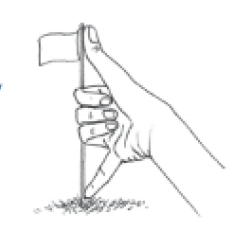Source Institutions
Source Institutions
Add to list Go to activity
Activity link broken? See if it's at the internet archive

In this activity, learners use their hands as tools for indirect measurement. Learners explore how to use ratios to calculate the approximate height of something that can't be measured directly by first measuring something that can be directly measured. This activity can also be used to explain how scientists use indirect measurement to determine distances between things in the universe that are too far away, too large or too small to measure directly (i.e. diameter of the moon or number of bacteria in a volume of liquid).
- Under 5 minutes
- 10 to 30 minutes
- free per group of students
- Ages 11 - 14
- Activity
- English
Quick Guide
Materials List (per group of students)
- playground or other paved surface that includes some vertical structures
- Stride Rulers or several meter sticks
- pencils
- clipboards or books to create a sturdy writing surface
Subjects
-
Earth and Space Science
- Astronomy
-
Mathematics
-
Algebra
- Equations and Inequalities
-
Geometry
- Plane Geometry
-
Measurement
- Units of Measurement
- Number and Operations
- Representation
-
Algebra
-
The Nature of Technology
-
The Design Process
- Problem Solving
-
The Design Process
-
The Nature of Science
-
The Scientific Process
- Conducting Investigations
- Gathering Data
-
The Scientific Process
Informal Categories
- Outdoor Activity
Audience
To use this activity, learners need to:
- see
- read
- be mobile
- touch
Learning styles supported:
- Involves hands-on or lab activities
Other
Components that are part of this resource:
This resource is part of:
Access Rights:
- Free access
By:
Rights:
- All rights reserved, Exploratorium, 2010
Funding Sources:
- National Science Foundation
- Gordon and Betty Moore Foundation
